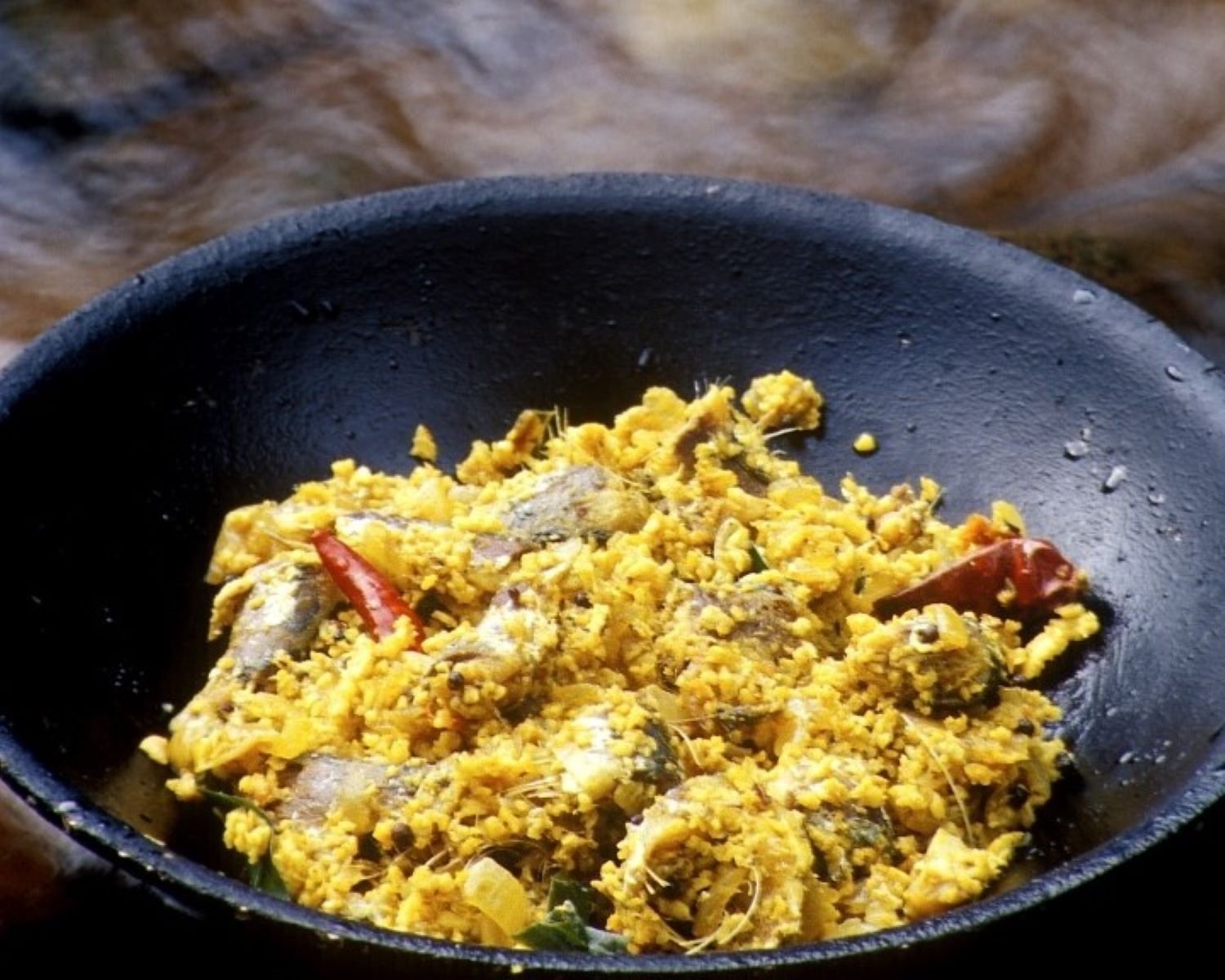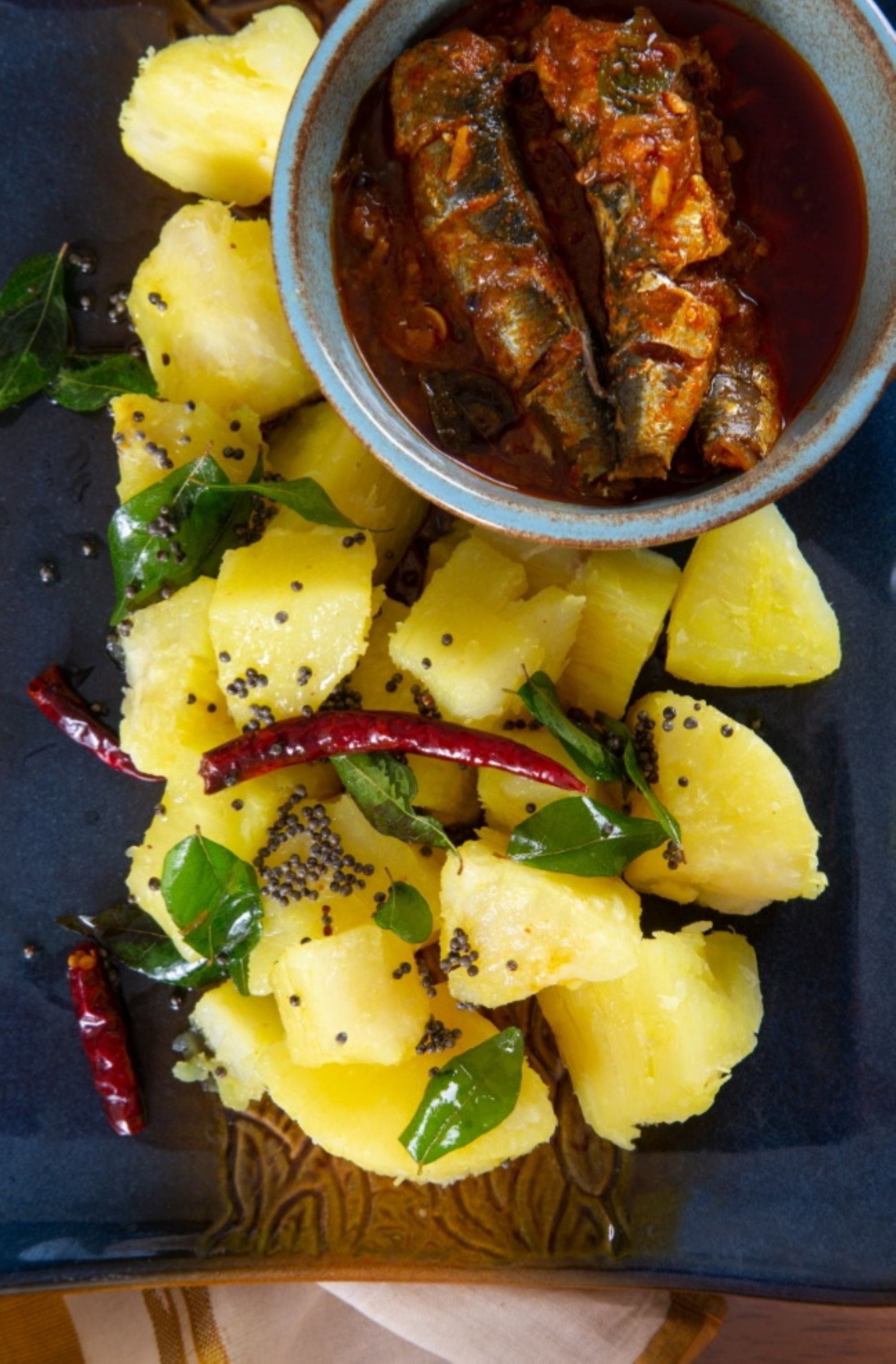A Malayali's Love Letter to the Mathi

The sardine is a staple food in homes, and small toddy shops across the state. Fried crisp, they are a great accompaniment to simple meals. Nitin Sumitran celebrates the many Keralite preparations that highlight the tiny (and tasty) sardine.
The cry of ‘Padakkana Mathi’ could mean only two things: sardine season and summer afternoons in Kerala.
As kids, we would spend our annual vacation in Kerala. Every morning, the fish seller would arrive on his bicycle, carrying a basket of the freshest mathi (sardines), ringing the bell and hollering in his sing-song way, ‘Padakkana Mathi.’ The phrase literally translates to flying, or almost-alive mathi, indicating the freshness of his catch. My mother and aunt would haggle briefly, then bring in a huge bowl for lunch. My mother only bought what she needed for the meal — the fish was easily available and a fresh lot would come around the following day.
My uncle, who was obsessed with gardening and growing fruits, would wait for the fish seller’s return trip at about 1 pm, to buy the leftover broken and slightly stale mathi to use as manure for his mango and jackfruit trees.
Sardines (mathi in Kerala) are a small, oily fish known for their rich flavour, vitamins, minerals and omega 3 fatty acids. This fish is found abundantly in the warm nutrient-rich waters of the Arabian Sea.
It is estimated that around 15-20% of the world's population consumes fish as part of their regular diet. In India, that number is closer to 20 or 25%. Fish-Curry-Rice or Prawn-Curry-Rice with a slice of fish fry is often the ideal meal at home or at the local sea food restaurant in many coastal states.
My oldest memories of buying fish are going to the Andheri West fish market with my father and brother. I’d stare in awe at the endless bed of fish strewn carelessly across the floor, my nose filled with that all-consuming stench. We’d return home with a small stash of pomfret, mackerel, prawns and other assorted fish, which my mother would clean and turn into a curry or fry. These were also the years when the fish sellers would come to our colony too, selling the catch of the day, and people would spend long, loud hours bargaining with them. As I grew up, those visits to the fish market grew less frequent, and home deliveries of cleaned and neatly-packed fish became the norm.
Most seafood restaurants in Mumbai have a huge variety of fish on their menu ranging from paplet, halva, surmai, rawas, kolambi, bangda, bombil, kekda, teesrya, kane, to mori or shark. Restaurants in Mumbai generally tend to favour larger fish and tend to ignore the smaller and tastier fish like the mandeli (golden anchovies) or tarli (sardine). Restaurants that do serve them, tend to deep fry them, but that just leaves them hard and flavourless.
The trick, if you ask any Keralite, is to slow roast them in coconut oil on an iron tava.
A Kerala Favourite
The mathi is a staple food in homes, and small toddy shops across the state. Fried crisp, they are a great accompaniment to simple meals. A mathi mulagitta curry (small sardines cooked in a fiery and tangy gravy) with some red rice or kappa (boiled tapioca) is a meal that can evoke both nostalgia and hunger for the average Malayali.
Owing to its popularity, there are many preparations of mathi in Kerala. In mathi mappas, unlike the mulagitta, the sardines are simmered in a coconut milk and spices. In mathi pollichathu, the sardines are marinated with spices, lightly fried on a girdle, wrapped in a banana leaf and then roasted either on an open flame or on a tava. Alternatively, they can be marinated and cooked on an open fire so the smokey flavour is imbibed directly into the tender flesh of the sardine. In mathi roast, sardines are fried in coconut oil. In the same pan, onions, spices and tomatoes are fried to a mush, and then the fried sardines are added back and tossed well.
Mathi porichathu has sardines marinated in basic spices like salt, turmeric, chilli powder and shallow fried in coconut oil on a cast iron skillet till they are golden and crisp on the outside, and flaky on the inside. This dish is one of the most popular bar snacks in the numerous kallu shaaps (toddy shops) that dot the state. (Read about other bar snacks, here). While kappa and mathi curry (boiled, mashed and tempered tapioca served with a tangy and red hot spicy sardine curry) is a favourite at thattukadas (streetfood stalls) across the state, eating this simple dish on a houseboat cruising the backwaters of Alleppey, with some fresh toddy as accompaniment, is truly an unmatched culinary experience. Another kappa mathi combination is found in the kappa puzhukku, a one-pot meal in which kappa is boiled, mashed and then cooked along with the sardine.
Shallow fried sardines are a common snack in kallu shaaps in Kerala | Sanjay Ramchandran
Kerala must be one of the only states where fish (mathi and kalumakai or mussels) are made into the most delicious pickle. These pickle jars inevitably find a spot in every Malayali’s suitcase on his return to the Middle East, after his annual sojourn home. Here, the humble sardine is marinated in basic spices, cut into small pieces, deep fried (with the bone in), and pickled in oil.
On your next visit to Kerala, ask your local guide to take you to the best seafood restaurant he knows, and order a portion of kappa-mathi curry, and if you having a glass of toddy, ask for a platter of nadan mathi fry. Life doesn’t get much better than that.
Nitin Sumitran is an ex-hospitality & corporate aviation professional based out of Mumbai. He operates a small home-kitchen in Powai, Mumbai, together with his wife Deepa, specialising in simple, home-style Kerala cuisine. You can reach them on Instagram as @appamstories or directly on +919004032817.
Images by Sanjay Ramchandran.
ALSO ON GOYA














